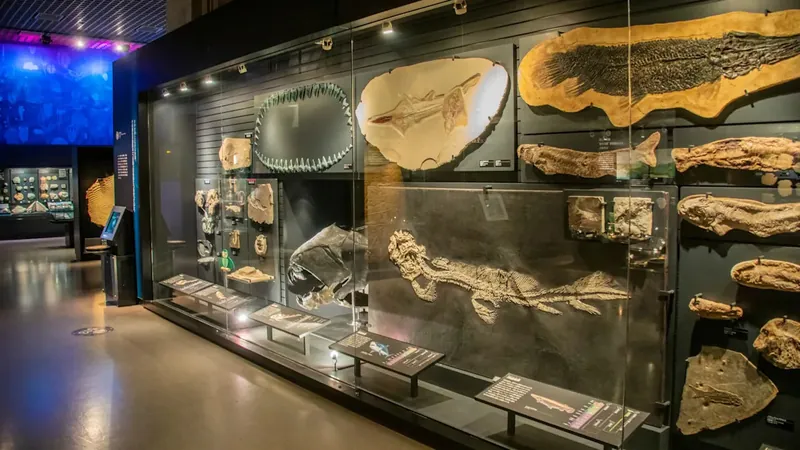
This Revolutionary Fossil is Redefining the Evolutionary Story of Fish!
2025-08-25
Author: Noah
A Game-Changing Discovery in Fish Evolution
A groundbreaking study featured in the prestigious Nature journal has transformed our understanding of fish evolution in ways we've never anticipated. Fossils have always played a crucial role in advancing scientific knowledge, and the recently studied Norselaspis glacialis is set to shake things up yet again.
The Jawless Wonder: Norselaspis glacialis
The research, a collaborative effort from the Canadian Museum of Nature and the University of Chicago, reveals that this jawless fish is closely tied to the early ancestors of jawed vertebrates. Through advanced X-ray imaging, researchers uncovered that Norselaspis possessed features believed to have emerged only after the evolution of jaws. This revelation suggests that significant advancements in sensory capabilities and locomotion occurred prior to jaw development, directly challenging the long-held belief that jaws drove early evolutionary changes.
Implications for Evolutionary Science and Humanity
This pivotal discovery is not just crucial for fish evolution; it brings insights that resonate through the entire evolutionary tree, including our own lineage. Researcher Tetsuto Miyashita emphasized its importance, stating, "These are the opening acts for a key episode in our own deep evolutionary history." Could this reshape how we view humanity's place in the grand tapestry of life?
The Accidentally Unearthed Fossil
The fossil itself has an intriguing backstory. Discovered in 1969 amidst the desolate beauty of the Norwegian Arctic, it was initially just a sandstone block collected for study. Decades later, researchers Philippe Janvier and Pierre Gueriau made an astounding find when they broke it open: a perfectly preserved Norselaspis glacialis fossil, measuring only half an inch!
Unveiling the Mysteries Through Advanced Scanning
Following its discovery, the fossil underwent detailed scans at the Paul Scherrer Institute in Switzerland. What surprised the research team was that despite being jawless, this fish was primed for speed with an advanced sensory system typically seen in predatory jawed fish. Miyashita metaphorically described Norselaspis as having "the heart of a shark under the skin of a lamprey," challenging previous assumptions surrounding jawless versus jawed fish biology.
Revising the Evolutionary Playbook
This finding echoes across the evolutionary timeline. The evolution of jaws wasn't a sudden leap from prey to predator; rather, it was a gradual transition. The initial jaws were more suited for suction feeding than violent predation, reflecting a slow evolution of predatory behavior. Remarkably, researchers found that the nerves leading to the shoulders developed independently from those heading to the gills, suggesting that shoulders evolved as entirely new structures, setting the stage for the eventual emergence of limbs.
A Twist in Our Own Evolutionary Narrative
This crucial insight alters our understanding of human evolution. If shoulders did not develop from modified gill structures, as previously thought, but rather emerged as novel attributes, it changes the narrative of how vertebrates, including our ancestors, adapted over time. This evolution of a distinct neck and shoulder separation marked a significant departure in body plan, paving the way for the eventual evolution of limbs.









 Brasil (PT)
Brasil (PT)
 Canada (EN)
Canada (EN)
 Chile (ES)
Chile (ES)
 Česko (CS)
Česko (CS)
 대한민국 (KO)
대한민국 (KO)
 España (ES)
España (ES)
 France (FR)
France (FR)
 Hong Kong (EN)
Hong Kong (EN)
 Italia (IT)
Italia (IT)
 日本 (JA)
日本 (JA)
 Magyarország (HU)
Magyarország (HU)
 Norge (NO)
Norge (NO)
 Polska (PL)
Polska (PL)
 Schweiz (DE)
Schweiz (DE)
 Singapore (EN)
Singapore (EN)
 Sverige (SV)
Sverige (SV)
 Suomi (FI)
Suomi (FI)
 Türkiye (TR)
Türkiye (TR)
 الإمارات العربية المتحدة (AR)
الإمارات العربية المتحدة (AR)